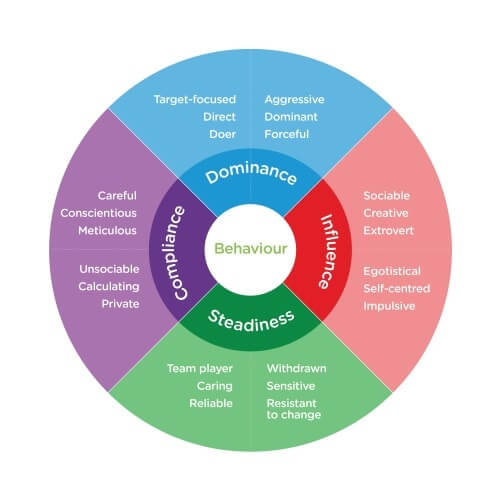No behavioural style is ‘better’ than another, and in order for any business to thrive, for the team to work productively and harmoniously, they will usually need all 4. The way I often explain how each behaviour works well together is with this story:
Your business wants to put on an event to raise brand awareness. The first person you would go to is the “influencer” – the social butterfly, who will know all the best places to go, and will lead idea generation for the event.
They’ll quickly find the perfect venue – but the “compliant” individual, the risk-adverse, asks the question, ‘How much is that going to cost?’ It turns out that the perfect venue the “influencer” has found is £5k over budget – far more than the business can afford to pay.
Once a more practical and in-budget venue has been located, the planning begins – this will be run by the “dominant” individual.
They will delegate duties, make sure that schedules are in place, and plan the event to a T, then will move on to do something else.
In order for the team to work effectively and for the event to take place at all, then, the event needs a “steady” individual.
They will ensure that each email is actually sent, that person involved in putting on the event knows what they are doing and is comfortable performing their particular task or tasks – ultimately, they’ll see that the event is carried out efficiently and effectively to the end.
So, each team needs all 4 elements in order for the event to happen.








